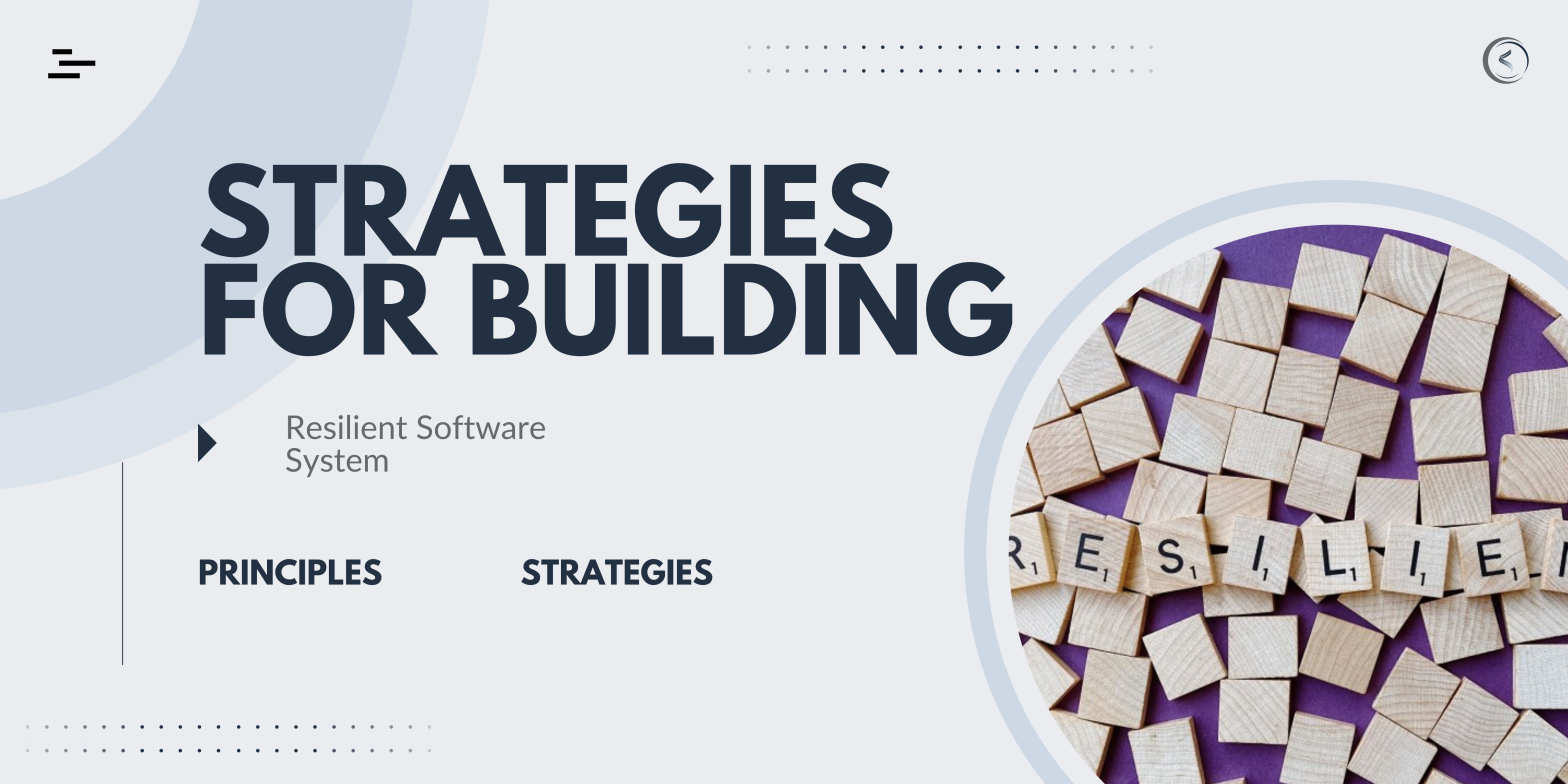In today’s digital landscape, software systems play a critical role in the success of businesses across various industries. However, the increasing complexity and interconnectedness of these systems pose significant challenges. Software failures, cyberattacks, and unforeseen disruptions can result in significant financial losses and reputational damage. To address these challenges, organizations are increasingly focusing on software resilience. In this article, we will explore the concept of software resilience, its importance, key principles, and strategies for building resilient software systems.
Understanding Software Resilience
Software resilience refers to the ability of a software system to withstand and recover from disruptive events while continuing to deliver essential services and meet user expectations. It goes beyond mere fault tolerance and emphasizes the system’s ability to adapt, recover, and maintain its critical functionalities even in the face of unexpected events or failures.
Importance of Software Resilience
- Minimizing Downtime and Losses: Software failures or disruptions can result in downtime, service interruptions, and financial losses. By prioritizing software resilience, organizations can minimize downtime, quickly recover from failures, and ensure uninterrupted operations, thus reducing the impact on revenue and customer satisfaction.
- Safeguarding Reputation: Software failures can damage an organization’s reputation and erode customer trust. Building resilient systems demonstrates a commitment to reliability and customer service, helping maintain a positive brand image even in challenging situations.
- Meeting Service Level Agreements (SLAs): Many organizations have SLAs that specify certain levels of service availability and performance. Software resilience enables businesses to meet these SLAs consistently, ensuring contractual obligations are fulfilled and customer expectations are met.
- Adapting to Changing Environments: The software landscape is constantly evolving, with new technologies, user demands, and security threats emerging regularly. Resilient software systems are better equipped to adapt and evolve in response to these changes, enabling businesses to stay competitive and agile in dynamic environments.

Principles of Software Resilience
- Redundancy: Redundancy involves duplicating critical components, systems, or data to ensure availability in case of failures. This can include redundant hardware, network connections, or data backups. Redundancy helps minimize single points of failure and increases system availability.
- Fault Tolerance: Fault tolerance refers to a system’s ability to continue functioning despite the occurrence of individual component failures. It involves designing systems with built-in mechanisms to detect and recover from failures automatically, without affecting overall system functionality.
- Scalability: Scalability is the ability of a software system to handle increasing workloads or accommodate growth without sacrificing performance or reliability. A scalable system can dynamically adjust resources to meet demand, ensuring consistent performance even during peak usage periods.
- Monitoring and Alerting: Proactive monitoring and alerting mechanisms are crucial for identifying potential issues or failures in real time. Continuous monitoring allows organizations to detect anomalies, troubleshoot problems promptly, and take proactive measures to prevent or mitigate disruptions.
- Disaster Recovery Planning: Disaster recovery planning involves creating comprehensive strategies and procedures to recover from catastrophic events. It includes regular backups, off-site storage, replication of critical systems, and well-defined recovery processes to restore operations quickly.
Strategies for Building Resilient Software Systems
- Design for Failure: When designing software systems, assume that failures will occur. Employ techniques such as fault injection testing, chaos engineering, and failure simulations to identify weak points and ensure that systems can gracefully handle failures without a complete collapse.
- Modular and Decentralized Architecture: Adopting a modular and decentralized architecture allows for independent components that can operate autonomously. This reduces the impact of failures, enhances scalability, and promotes system resilience.
- Robust Error Handling and Recovery Mechanisms: Implement comprehensive error handling and recovery mechanisms within the software system. This includes implementing graceful error handling, retry mechanisms, and fallback strategies to handle unexpected errors or failures. By anticipating potential failure scenarios and designing appropriate recovery mechanisms, software systems can recover quickly and maintain critical functionalities.
- Data Redundancy and Backup: Implement robust data redundancy and backup strategies to ensure the availability and integrity of critical data. Regularly back up data and store backups in secure off-site locations. Utilize technologies such as replication and distributed storage to ensure data redundancy and minimize the risk of data loss.
- Continuous Monitoring and Incident Response: Implement a robust monitoring system to continuously track the health and performance of software systems. Proactive monitoring enables early detection of anomalies or failures, allowing for timely intervention and mitigating potential risks. Additionally, establish an effective incident response plan to address any detected issues promptly and efficiently.
- Regular Testing and Maintenance: Regular testing and maintenance are essential to ensure the ongoing resilience of software systems. Conduct comprehensive testing, including stress testing, load testing, and security testing, to identify vulnerabilities and weaknesses. Keep software systems up to date with regular patches, updates, and bug fixes to address known issues and enhance overall resilience.
Collaborate with External Partners: In some cases, collaborating with external partners can enhance software resilience. This can include leveraging cloud service providers that offer built-in redundancy and disaster recovery capabilities, partnering with specialized security firms for regular vulnerability assessments, or engaging with third-party vendors that provide software escrow services to ensure continuity in the event of vendor disruptions.
Conclusion
In an increasingly interconnected and complex digital landscape, software resilience is critical for organizations to ensure uninterrupted operations, protect their reputation, and minimize financial losses. By embracing the principles of redundancy, fault tolerance, scalability, and proactive monitoring, businesses can build resilient software systems that can withstand disruptions and adapt to changing environments. Implementing strategies such as designing for failure, employing modular architectures, robust error handling, data redundancy, and regular testing and maintenance are essential steps in building resilient software systems. By prioritizing software resilience, organizations can achieve sustainable success and maintain a competitive edge in today’s technology-driven world.
Ensure the resilience of your business-critical software today and safeguard your investments for tomorrow. Leverage software escrow solutions to ensure access to your software source code, ensuring continuity and minimizing disruptions to your business operations. Navigate the software escrow market with confidence, knowing that your software and your business are resilient in the face of uncertainties. Don’t wait until it’s too late, ensure your software resilience now with our secure and trusted escrow solutions.
Contact us today for more information, and let’s take a step toward a secure and resilient future together.
